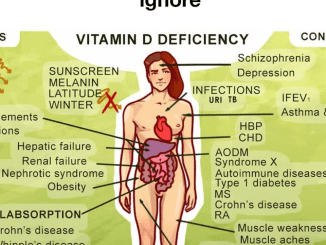The world of weather reporting is usually one of measured tones and calm updates. But on October 7, John Morales, a veteran meteorologist, struggled to maintain his composure on live television as he reported on the imminent arrival of Hurricane Milton, a Category 4 storm barreling toward the U.S. with catastrophic potential. As he described the hurricane’s deadly path, Morales’ emotions broke through—a moment that resonated deeply with viewers and underscored the sheer gravity of the situation.
Hurricane Milton: A Storm of Unprecedented Intensity

Hurricane Milton is not just another storm. It’s a Category 4 hurricane with the potential for devastation on an unimaginable scale. Meteorologists have been tracking the storm’s progress as it barrels across the Gulf of Mexico, feeding on warm waters and gaining strength. By the time it reaches the Florida coast, Milton is expected to bring sustained winds of up to 129 mph, torrential rains, and life-threatening storm surges.
For Morales, who has spent years on air delivering weather updates, the reality of Milton’s impact became painfully clear. The storm has already caused the evacuation of millions and threatens to disrupt countless lives. As Morales explained, “It has dropped 50 millibars in 10 hours”—an astonishingly rapid intensification that signals just how powerful this storm has become. This dramatic drop in pressure reflects the raw force of a storm fueled by climate change, bringing risks that are all too real for those in its path.
The Emotional Toll of Reporting Extreme Weather Events
As he reported on Hurricane Milton, Morales found himself overwhelmed. His voice shook, and tears welled up as he struggled to articulate the horror of what lay ahead. This was not just a weather update; it was a sobering reminder of the human toll that extreme weather events can exact on both those who live through them and those who bear witness from afar.
For many meteorologists, extreme weather events have become a regular part of their reporting. But for Morales, the enormity of Hurricane Milton, coupled with the recent devastation of Hurricane Helene—which left over 200 dead—was almost too much to bear. Following the broadcast, he took to social media, sharing his reflections on the experience and calling for greater awareness of climate change. He wrote, “I invite you to read my introspection on how extreme weather… driven by global warming has changed me. Frankly, YOU should be shaken too.”
How Hurricanes Helene and Milton Reflect a New Reality
Just days before Hurricane Milton threatened the Gulf Coast, Hurricane Helene ravaged parts of the U.S., leaving a trail of destruction and death in its wake. With over 200 confirmed fatalities and widespread damage to infrastructure, Helene was a chilling reminder of nature’s fury. Now, as Milton approaches, many of the same areas are once again in the crosshairs.
The back-to-back nature of these storms raises questions about the frequency and intensity of hurricanes in recent years. Climate experts warn that these storms are growing stronger, more destructive, and more frequent due to warming oceans and rising sea levels. Milton and Helene serve as glaring examples of this new reality—a reality that we must confront with urgency.
Evacuation Orders and Warnings for Those in the Path of Destruction
As Hurricane Milton approaches Florida’s west coast, emergency services are ramping up their warnings. With evacuation orders affecting hundreds of thousands, officials have made it clear that remaining in the storm’s path could be a fatal decision. Hillsborough Fire Rescue Chief Jason Dougherty echoed these concerns, stating, “If you remain there, you could die, and my men and women could die trying to rescue you.”
In Tampa Bay, home to over three million people, the warnings are especially dire. This area hasn’t experienced a direct hit from a major hurricane in over a century. With storm surges projected to inundate low-lying areas and strong winds set to knock down power lines and trees, the threat to life and property is immense.

Preparation Efforts on an Unprecedented Scale
Florida’s Governor, Ron DeSantis, has spearheaded an extensive preparation effort to brace the state for the storm. Critical infrastructure, including hospitals and wastewater treatment plants, has been reinforced, and over 1.2 million gallons of fuel have been stockpiled to ensure that emergency services have the resources they need. This preparation effort reflects the state’s recognition of the unprecedented threat posed by Hurricane Milton.
President Joe Biden has also responded swiftly, issuing an emergency declaration and mobilizing 7,000 federal workers to assist with disaster relief. This coordinated effort between federal and state agencies represents one of the largest emergency responses in U.S. history. Tampa Mayor Jane Castor summarized the gravity of the situation, saying, “If you want to take on Mother Nature, she wins 100% of the time.”
The Emotional Impact of Hurricanes on Meteorologists
For meteorologists like John Morales, reporting on hurricanes isn’t just a job—it’s a mission to protect and inform the public. But the emotional toll of witnessing such devastation can be profound. In a moment of vulnerability, Morales allowed viewers to see the human side of his profession. His tears weren’t just a sign of fear or despair; they were a call to action, a reminder that climate change is making these storms more frequent and more severe.

When we watch someone like Morales break down on live TV, it forces us to confront our own feelings about climate change and extreme weather. We can no longer view these events as isolated incidents. Instead, they are part of a broader pattern that will continue to shape our world unless we take decisive action.
Confronting the Future: Preparing for More Storms Like Milton
As Hurricane Milton nears the coast, the images of devastation left by Hurricane Helene are still fresh in our minds. For the residents of Florida and the Gulf Coast, the prospect of another powerful storm is a harsh reminder of the fragility of life in hurricane-prone regions. It’s also a stark illustration of the new normal we face in an era of climate-driven superstorms.
➡️ NOW: An emotional hurricane #Milton update from @JohnMoralesTV as the storm hits Cat. 5 status.
— CHRIS HUSH (@ChrisHushNBC) October 7, 2024
Take this seriously.
We have you covered here on @nbc6 pic.twitter.com/QEe3E25JGX
While emergency preparations are essential, long-term solutions are also critical. Building more resilient infrastructure, improving evacuation plans, and reducing our carbon footprint are all steps we can take to mitigate the effects of climate change. Hurricanes like Milton and Helene are just two examples of the challenges we will continue to face, and our response to them will determine our future resilience.
Conclusion: A Call for Awareness and Action
John Morales’ emotional response to Hurricane Milton underscores the urgency of the situation. As we confront increasingly powerful storms, it’s clear that these events are more than just natural disasters—they are warnings. Warnings about the consequences of climate change and the fragility of our communities in the face of nature’s fury.
In the end, Morales’ tears are a reminder that we must take these storms seriously. We must prepare, adapt, and, most importantly, act to address the underlying issues that contribute to their severity. As we brace for Hurricane Milton, let’s also remember that each of us has a role to play in building a safer, more resilient world for future generations.


